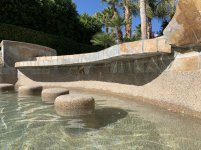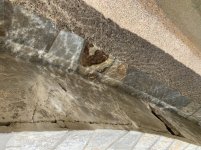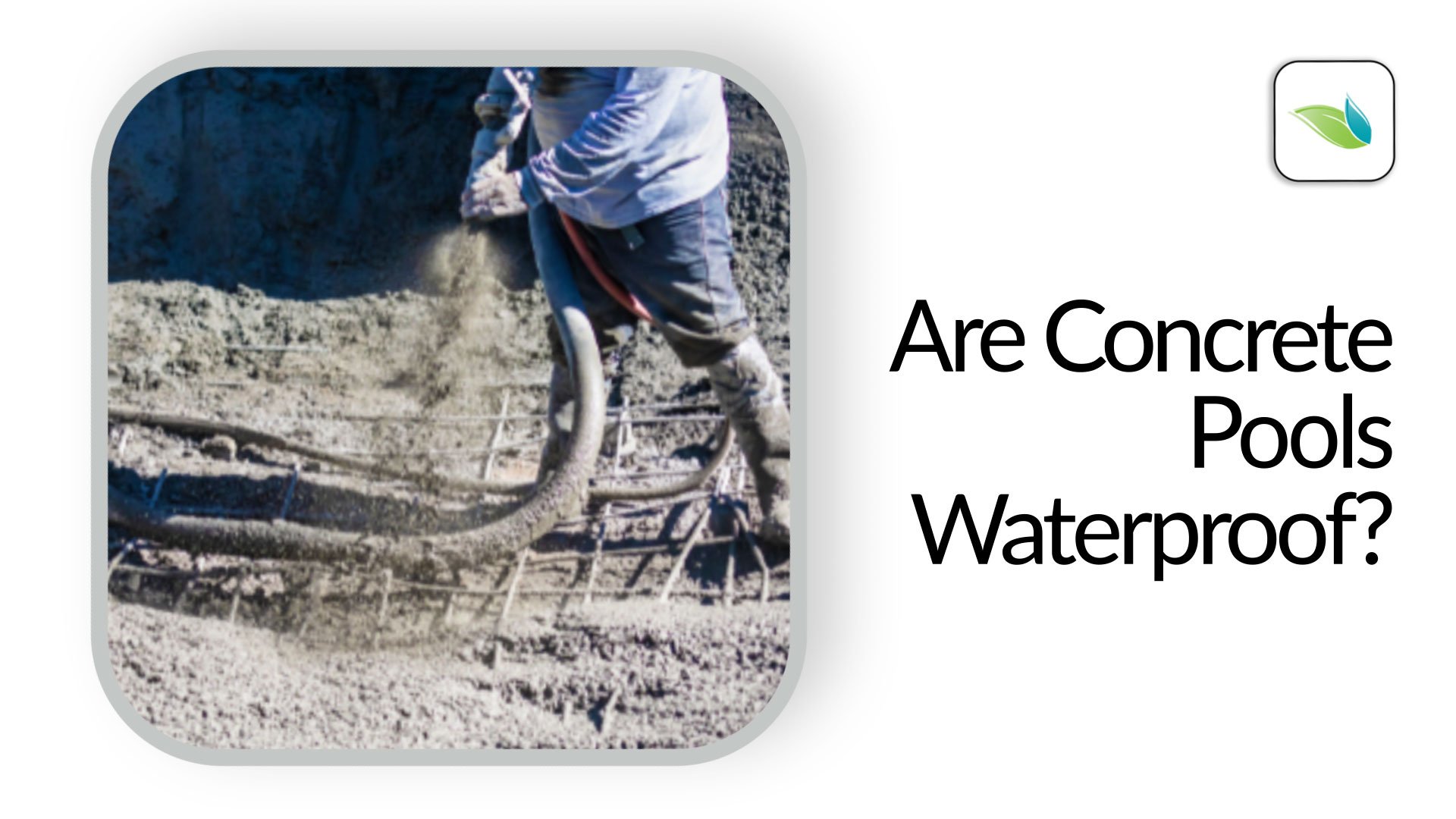- Jan 21, 2022
- 36
- Pool Size
- 35000
- Surface
- Plaster
- Chlorine
- Salt Water Generator
- SWG Type
- Hayward Aqua Rite (T-15)
Hey folks -- we have an in-pool countertop, with the underside maybe 4 to 6 inches over the water line, and we had some spalling from rust on a thin piece of reinforcing wire. It looks fairly thin so I don't think it is rebar. A good chunk of concrete has come off from 1/2 to 1 inch thick. I have no idea if the moisture is coming from above or below. Thin rock surfacing on the top and sides. We can hear hollow sound underneath on the top side when tapping on it.
What would be the recommended repair on this? The counter is not very thick so of course it concerns us from a structural standpoint that this large of chunk has come out, however it feels generally solid.
I assume we have to address the rust by either removing the rusted wire or neutralizing and perhaps encasing it -- maybe POR15. In my brief research, I have read about rebar and kevlar staples for reinforcement of cracks in pool walls. Should we attempt to embed something like this into a repair, even drilling some anchor holes? Running a hammer drill for some holes seems a bit scary. Or perhaps we at least should embed some kind of mesh in whatever grout/concrete/plaster we use? I still need to try to figure out what finish we have down there and if it is straight concrete, and/or if there is (or should be) any plaster or other coating over it. The rest of the pool has pebble-tec but this area does not have that coating.
What would be the recommended repair on this? The counter is not very thick so of course it concerns us from a structural standpoint that this large of chunk has come out, however it feels generally solid.
I assume we have to address the rust by either removing the rusted wire or neutralizing and perhaps encasing it -- maybe POR15. In my brief research, I have read about rebar and kevlar staples for reinforcement of cracks in pool walls. Should we attempt to embed something like this into a repair, even drilling some anchor holes? Running a hammer drill for some holes seems a bit scary. Or perhaps we at least should embed some kind of mesh in whatever grout/concrete/plaster we use? I still need to try to figure out what finish we have down there and if it is straight concrete, and/or if there is (or should be) any plaster or other coating over it. The rest of the pool has pebble-tec but this area does not have that coating.







.png)


